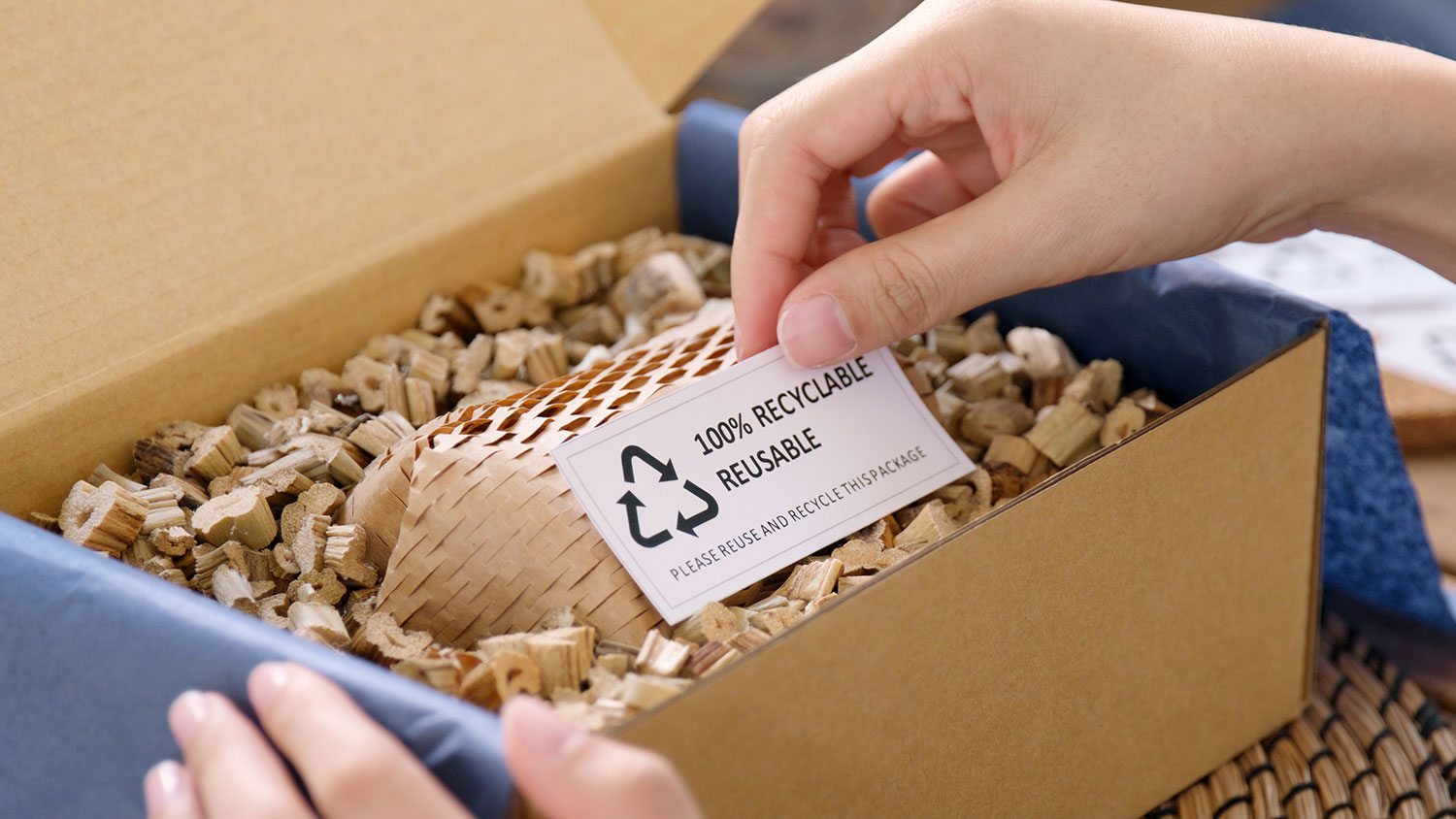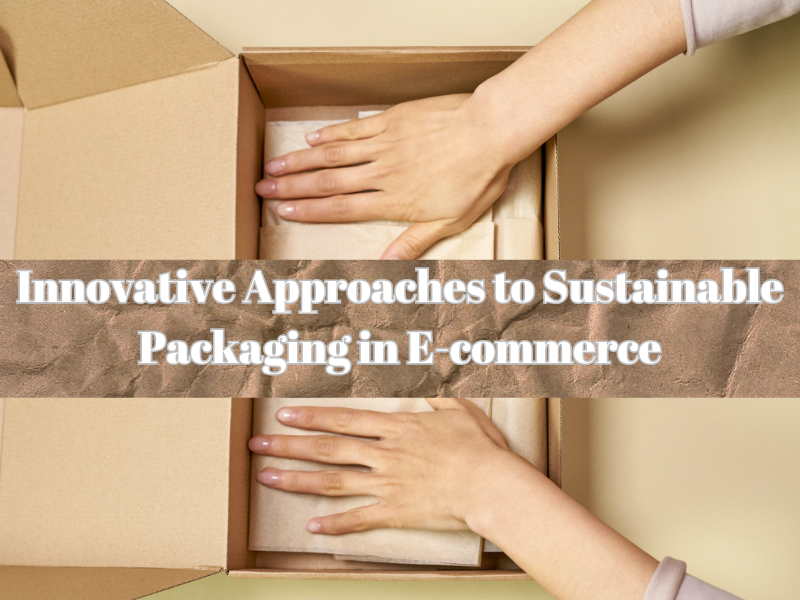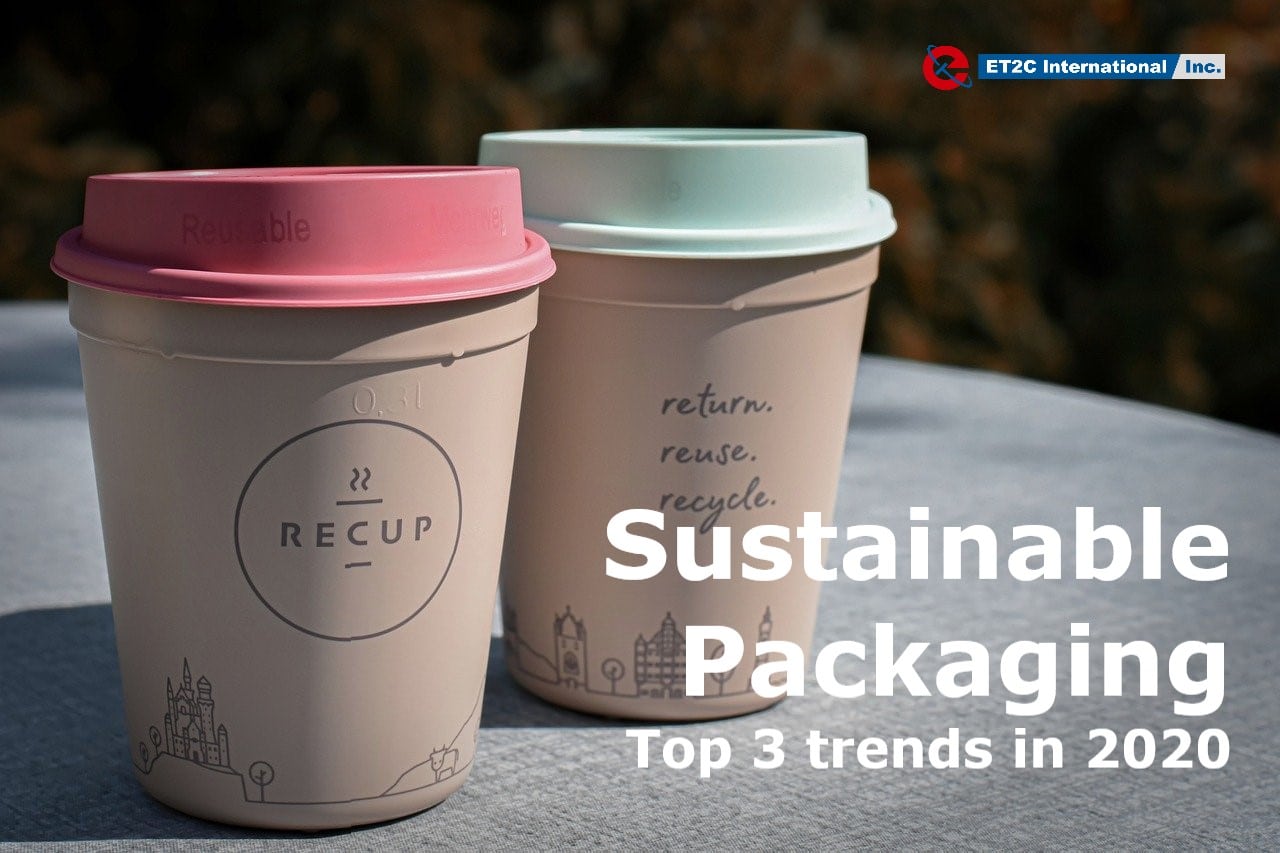Exploring Sustainable Packaging Trends in European Ecommerce
Diving into Sustainable Packaging Trends in European Ecommerce, this introduction delves into a captivating narrative that will engage readers right from the start.
Providing insights into the use of eco-friendly materials, innovative packaging designs, regulations, and consumer behavior, this overview sets the stage for a comprehensive discussion on sustainable packaging trends in European ecommerce.
Sustainable Packaging Materials

When it comes to sustainable packaging materials, there are several eco-friendly options that have gained popularity in European ecommerce. These materials not only help reduce environmental impact but also provide various benefits for businesses and consumers.
Examples of Eco-Friendly Materials
- Biodegradable plastics made from plant-based sources like corn starch or sugarcane
- Recycled paper and cardboard for boxes and packaging fillers
- Mushroom packaging made from mycelium, a biodegradable material
- Compostable materials like PLA (Polylactic Acid) for packaging films
These materials offer a sustainable alternative to traditional packaging options and support the circular economy by reducing waste and promoting recycling.
Benefits of Using Sustainable Materials
- Reduced carbon footprint and greenhouse gas emissions
- Enhanced brand reputation and customer loyalty
- Lower costs in the long run due to reduced waste disposal fees
- Compliance with environmental regulations and sustainability goals
By incorporating these eco-friendly materials into their packaging strategies, European ecommerce businesses can align with consumer preferences for sustainable products and contribute to a greener future.
Environmental Impact Comparison
When comparing the environmental impact of traditional packaging materials like plastic and styrofoam with sustainable alternatives, the benefits of the latter become evident. Traditional materials often end up in landfills, take centuries to decompose, and contribute significantly to pollution and wildlife harm.
On the other hand, sustainable materials are biodegradable, compostable, and recyclable, reducing waste accumulation and promoting a more sustainable lifecycle for packaging products. This shift towards eco-friendly materials in European ecommerce is essential for mitigating environmental damage and fostering a more environmentally conscious industry.
Packaging Design Trends
Innovative packaging designs that prioritize sustainability play a crucial role in reducing environmental impact and enhancing brand image in the ecommerce industry. These designs not only appeal to environmentally-conscious consumers but also showcase a brand's commitment to sustainable practices.
Innovative Sustainable Packaging Designs
- Biodegradable Packaging: Using materials like compostable plastics, plant-based polymers, or mushroom packaging that can easily decompose without harming the environment.
- Reusable Packaging: Introducing packaging that can be reused multiple times, such as sturdy boxes or containers that customers can return for refill or recycling.
- Minimalist Packaging: Opting for simple and minimalistic designs that reduce material usage and waste, while still protecting the product during transit.
- Edible Packaging: Creating packaging materials that are edible or can dissolve in water, eliminating the need for disposal and reducing pollution.
- Plantable Packaging: Integrating seeds into packaging materials, allowing customers to plant them after use and grow plants, promoting sustainability and green initiatives.
Enhancing Brand Image in Ecommerce
Packaging design plays a significant role in shaping a brand's image in the ecommerce landscape. By incorporating sustainable packaging designs, brands can communicate their values and commitment to environmental responsibility to consumers. This not only attracts eco-conscious customers but also differentiates the brand from competitors, leading to increased brand loyalty and positive brand perception.
Examples of Creative Sustainable Packaging Designs
- LOLIWARE: Edible cups made from agar (seaweed extract) that can be consumed after use, reducing single-use plastic waste.
- Seed Phytonutrients: Packaging made from 100% post-consumer recycled paper with embedded seeds, encouraging customers to plant them and grow wildflowers.
- EcoEnclose: Reusable and recyclable shipping supplies made from recycled materials, offering eco-friendly packaging options for ecommerce businesses.
- Loop: Reusable packaging platform that partners with major brands to deliver products in durable containers that can be returned, cleaned, and refilled for reuse.
- Paptic: Sustainable alternative to plastic packaging made from renewable wood fibers, providing a compostable and recyclable solution for various products.
Regulations and Compliance

In Europe, there are strict regulations in place regarding sustainable packaging to promote environmental protection and reduce waste.
Compliance with Regulations
Ecommerce businesses need to ensure compliance with these regulations by using sustainable packaging materials, reducing packaging waste, and labeling products correctly.
Importance of Sustainable Packaging Standards
- Ecommerce operations must meet sustainable packaging standards to minimize their environmental impact and contribute to a greener future.
- By complying with regulations, businesses can build trust with environmentally-conscious consumers and enhance their brand reputation.
- Meeting sustainable packaging standards also helps companies avoid fines and penalties for non-compliance.
Consumer Behavior and Preferences
Consumer awareness of sustainable packaging has a significant impact on purchasing decisions in the European ecommerce market. As more consumers become environmentally conscious, they are actively seeking products that are packaged in eco-friendly materials. This shift in consumer behavior has compelled businesses to prioritize sustainability in their packaging strategies to meet the growing demand for environmentally responsible products.
Influence on Purchasing Decisions
- Consumers are more likely to choose products that are packaged using sustainable materials such as recycled paper, biodegradable plastics, or compostable packaging.
- Eco-friendly packaging can act as a differentiator for brands, attracting consumers who are willing to pay a premium for products that align with their values.
- Studies have shown that a majority of European consumers are willing to switch brands to support those that demonstrate a commitment to sustainability through their packaging choices.
Impact on Consumer Loyalty
- Businesses that prioritize sustainable packaging can build stronger relationships with customers, leading to increased brand loyalty and repeat purchases.
- Consumers are more likely to recommend brands that use eco-friendly packaging to their friends and family, further enhancing brand reputation and trust.
- By investing in sustainable packaging solutions, companies can create a positive brand image that resonates with environmentally conscious consumers, fostering long-term loyalty.
Educating Consumers
- Businesses can educate consumers about the importance of sustainable packaging through transparent communication about their packaging choices and environmental initiatives.
- Utilizing labels, certifications, and informative packaging materials can help consumers make informed choices and understand the environmental impact of their purchasing decisions.
- Engaging with consumers through social media, blogs, and other digital platforms can also raise awareness about sustainable packaging practices and encourage more environmentally friendly behaviors.
Last Recap

In conclusion, the evolving landscape of sustainable packaging in European ecommerce highlights the importance of eco-conscious practices and consumer awareness. As businesses adapt to meet sustainable packaging standards, the future of ecommerce looks promising with a focus on environmental responsibility.
FAQ Overview
What are some examples of eco-friendly materials used in sustainable packaging?
Common eco-friendly materials include biodegradable plastics, recycled paper, and compostable materials.
How does packaging design enhance brand image in ecommerce?
Innovative and sustainable packaging designs can differentiate a brand, create a memorable unboxing experience, and showcase a company's commitment to environmental stewardship.
What are the current regulations in Europe regarding sustainable packaging?
European regulations focus on reducing waste, promoting recyclability, and encouraging the use of sustainable materials in packaging.
How does consumer awareness of sustainable packaging impact purchasing decisions?
Consumers increasingly prefer brands that prioritize sustainability, leading to a shift towards eco-friendly packaging choices and influencing purchasing behavior.